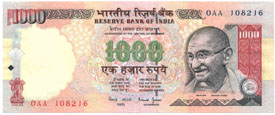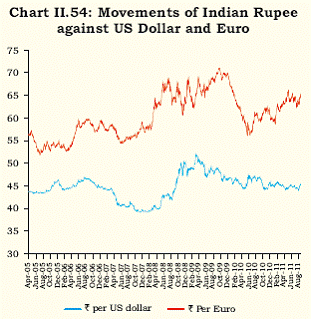Like waves and tides in the sea, price movements in foreign exchange markets are routine. Except for bankers and currency traders, who like fishermen depend on this churn for a living, it is ignored by most others. Occasionally, as these waves turn into tidal waves, they engage the general public whose secure life suddenly begins to feel threatened.
Last month we had a currency churn as the rupee value plummeted rapidly to breach the psychological barrier of Rs.60 per US dollar. This triggered a wave of public outcry, often emotional in content, making it tough for a layman to decipher its implications. A curious layman has no option but to rationally evaluate for himself what this fall can mean. Can there be a better place to start this analysis than from its origin?
In ages long gone by, foreign trade was conducted by barter. Like Sindbad the sailor, adventurous traders sailed from one land to another carrying their goods for sale. In foreign lands, they would sell their goods and buy local goods of equal value. If for any reason they could not find local goods, they would bring back precious metals like gold and silver, as both metals had universal acceptability. Till the nineteenth century, this system continued to work well, until England, powered by the industrial revolution, began to generate a consistent and large surplus, posing a new challenge. England purchased raw material from her colonies which also comprised her market for finished goods. To facilitate trade both within and outside the country and to prevent two-way movement of gold, England adopted the gold standard in the year 1820.

A 1000-rupee note. Photo courtesy: Reserve Bank of India
Gold standard in its essence involved a country holding a stock of gold against which it issued currency by fixing the ratio of gold to the currency issued. With this agreement in place, the government would buy gold for equivalent value of currency or receive currency and in return, give out equivalent value of gold. The objective of this mechanism was to equate their currency with gold. Once England adopted the gold standard, it could pay for purchases with their gold-backed paper currency. To show its viability, English traders also accepted their own currency as payment for goods sold by them. Seeing the benefits derived by English traders, most of Europe and the USA also adopted the gold standard by 1880s. With the gold standard in place, the value of a country's currency was determined by its gold backing. Even though in practice paper currency was exchanged, in reality what was being exchanged was the underlying gold these paper currencies represented.
By the end of the Second World War, however, all countries except the USA had abandoned the Gold Standard. After war, these countries could not return to the gold standard as they had issued currency far in excess of their gold holding. Post-war when the countries met together to work out a new arrangement for international trade, they entered into a mutually supportive agreement, called the Bretton Woods Agreement after the venue where this meeting was held. Under this agreement only the US$ would be backed by gold. All other countries were free to fix their currency rates with reference to the US$ at any level they chose. The only condition was that the rate fixed could not be changed unless there was a major structural change in their economy.
The predicament a country faces in fixing its currency exchange rate is the same challenge that a business faces in fixing the price for their product. If they fix too low a price, all their produce will be sold, but at a loss. If they fix too high a price, none of their goods will be sold. Similarly, for a country too, if the exchange rate is very attractive for foreigners, the country's exports will flourish as their products become cheap. At the same time, their residents will be paying more to use other countries' goods. On the other hand, if a country fixes an exchange rate overly attractive for its local citizens, consuming imported goods will be cheaper. However, they will not have enough currency to pay for it as their own locally produced goods become expensive and may not find takers. Given this predicament, a country needs to fix a fair price for its currency, failing which it cannot sustain the currency conversion rate.
India is an original signatory to the Bretton Woods agreement in 1945. On gaining independence in 1947, India joined IMF, the agency set up consequent to the Bretton Woods agreement, and fixed the US$ conversion rate at Rs.3.31. Two decades later, the global post-war reconstruction efforts were completed and the need for a collaborative system of global currency management diminished. This led to the US government stopping conversion of their currency into gold, thereby ending the collaborative agreement in 1971 and relying on market forces to determine exchange rates.
Post 1971, globally foreign currency rates came to be determined by market forces. Large and robust economies like USA, England, Japan and the European Union among others let the market forces of demand and supply determine their currency rates. As their economies gained in relative strength, their currency appreciated and any decline in relative strength led to currency depreciation. Between 1947 and 1971, the US$ appreciated from Rs.3.31 to Rs.7.50, or in other words, the Indian rupee depreciated.
In contrast, certain other economies like China have chosen to peg their currency rates. Their central bank keeps their currency rates pegged to the US$ to enable their exporters to gain an advantage and sell more even when their economy is gaining in comparative strength. This strategy however cannot be continued in the long run as it comes at the cost of selling their national resources cheap which offers the short term advantage of faster economic growth and reduced unemployment.

A sample chart showing movements of the Indian currency against the Dollar and Euro. Photo courtesy: Reserve Bank of India
In between the two systems of market determined and pegged currency rates is the Indian system of managed float. When the currency movement is seen to be favorable for the Indian economy, market forces are permitted full play. But at the first sign of an adverse move, RBI enters the market to regulate currency movement in the desired direction by introducing restrictions on either purchase or sale of foreign currencies. While RBI cannot hold market forces at bay for ever, it can and does ensure a gradual and orderly movement that least disrupts the economy.
In the four-decade period from 1971 to 2013, the US$ appreciated from.Rs 7.50 to Rs 60. In other words, the rupee depreciated eight times or by 800%. A large portion of this depreciation has been due to higher inflation in India compared to the US, the remainder reflecting lower productivity.
Rupee depreciation benefits exporters. For instance, an exporter who sold his goods in 1971 for $1 would have got Rs.7.50. Today the same exporter selling at the same price of $1 would get Rs.60. This advantage to the exporter comes at a cost paid by the consumers of imported goods. Crude oil needed for producing petrol and diesel forms the largest component of our imported goods. Being essential goods of daily consumption, a rise in the price of such import increases the cost of living for the entire population. Given this trade off, do our policy makers have a choice in determining the direction of currency movement? The answer is Yes and No.
No is the answer if we look at it purely from a short term perspective, as the currency movement is in the desired direction. Policy makers today are faced with a situation where imports outstrip exports leading to an ever-widening current account deficit. The current rupee depreciation could help rein in this deficit by promoting exports even as it deters imports into the country.
The same answer, however, could turn into the affirmative if we look at a longer time frame, when policy makers have the option to promote a stronger economy. A strong economy is one that grows faster, has low inflation and has a manageable current account balance. There could be multiple paths to such a stronger economy based on different ideological beliefs. But economic performance is critical as currency movement follows the direction of its economy. The Indian currency, too, would appreciate if its economy can be strengthened but depreciate further if the economy weakens relative to other global economies.

